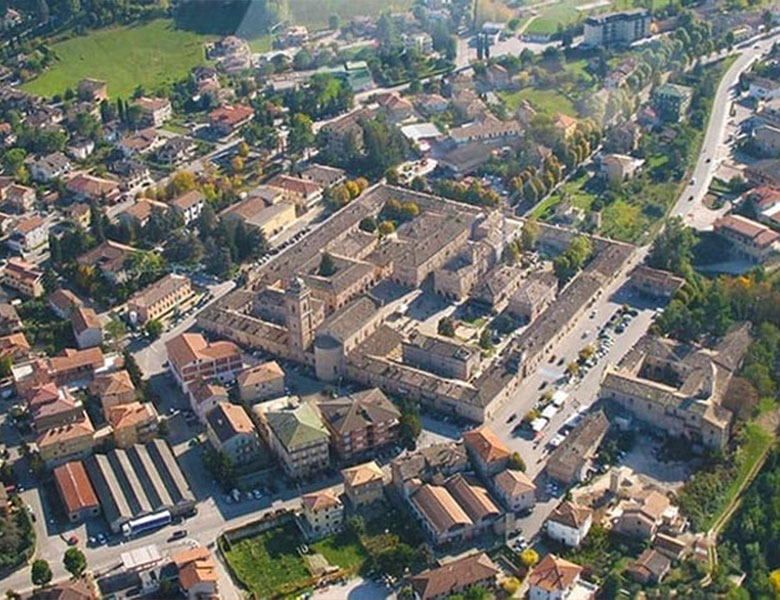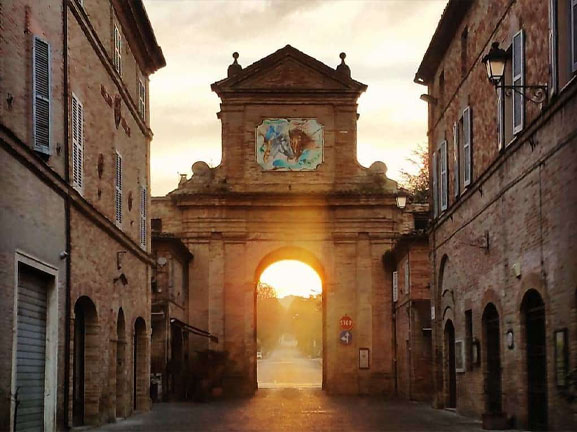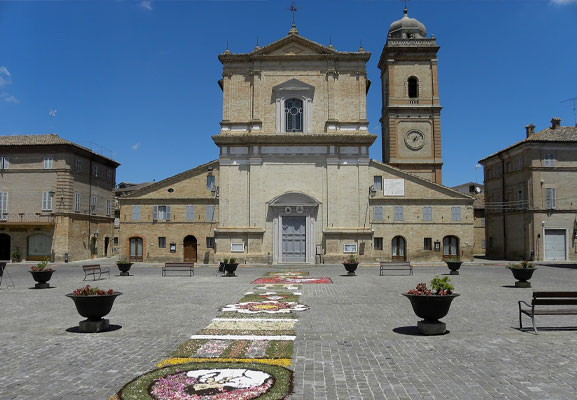Servigliano, the Ideal City
Servigliano (FM)
One of the most beautiful villages in Italy
With an architecture completely different from the other mediaeval municipalities of the Marches, Servigliano has earned the title of “ideal city” for its typically eighteenth-century structural canons and its cubic structure.
A further element of attractiveness of the Fermo area is the unique distinctiveness of the villages combining archaic, Roman and mediaeval architectural elements, as a testimony to the history of the territory.

THE CASTLE WALLS

The castle walls of quadrangular form (144 by 137 metres), were designed by the architect Bracci in the 18th century. With three imposing access gates, the urban architecture recalls the shape of a cross, highlighted by the orthogonal crossing of the two main streets that lead to the collegiate church.
THE ANCIENT CHURCH OF SANTA MARIA DEL PIANO

In the ancient Church of Santa Maria del Piano, built on the ruins of a 1st-century Roman villa are conserved a fifteenth-century statue of Our Lady of the Assumption, a very beautiful choir made of elm wood and a sixteenth-century wooden Crucifix.
OTHER POINTS OF INTEREST
The village boasts numerous sites of interest, including the Convent of the Friars Minor of the Observance, the bridge that crosses the River Tenna, the Collegiate Church of Saint Mark, dating back to the eighteenth century, where the relics of the Saint and of Saint Walter are conserved. Among the most imposing buildings Palazzo Vecchiotti, the Town Hall and Palazzo Filoni stand out. Particularly interesting are also the House of Remembrance (Casa della Memoria), dedicated to the concentration camp, and the evocative Peace Park.
A LEAP BACK IN TIME

During the week of the August bank holiday, the village travels back in time to the middle of the fifteenth century thanks to the re-evocation of the Castel Clementino Knightly Tournament. This fascinating event sees the participation of knights and dames, with jousting and mediaeval taverns, all carefully dressed in costumes of the time. The event attracts thousands of tourists eager to immerse themselves in the secrets of the past.
FOOD AND WINE

Local genuine food
The beneficial action of the energies of the territory is combined with the wide range of typical local products, including the wine available in numerous wineries in the area, the extra-virgin olive oil, the vegetables cultivated according to the ancient horticultural tradition and the use of new types of wheats with low gluten content for the production of pasta and bread.
All these ingredients are in line with the principles of the Mediterranean Diet, which obtained its validation in Montegiorgio in the last century in the context of the study of the 7 countries. In the meantime, in the Fermo area the Picene Laboratory of the Mediterranean Diet operates; this association promotes a healthy lifestyle.
This has already happened and continues thanks to the availability of former rural buildings that can be used in a context of absolute social tranquillity, according to a lifestyle that values family ties and solidarity among members of the community.
